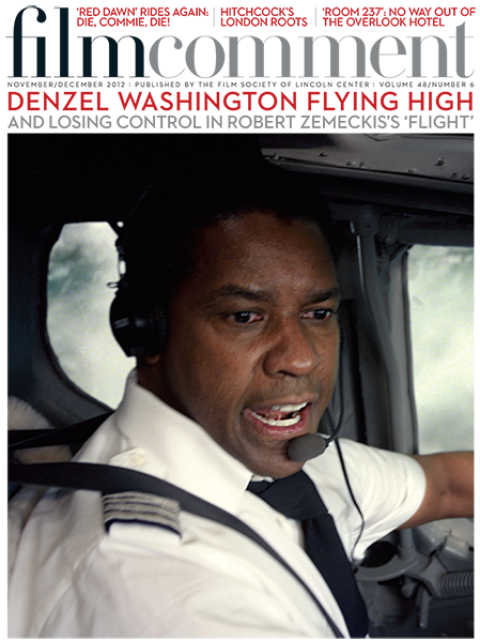
Like a fitted coat worn by someone it wasn’t tailored for, parts of Cloud Atlas bulge out, overstretched, begging for more material, while other sections hang laughably loose. Adapted from the multiple-award-winning 2004 novel by David Mitchell, the problems of this alternately impoverished and bloated threehour behemoth derive from both its source and its mode of adaptation.
The book’s six consecutive storylines form a narrative matryoshka: each protagonist reappears within a story that is being read or watched by the protagonist of the next episode. Each episode also pauses in media res, and the labyrinthine process of resolution begins about halfway through the book, and then works its way back to the opening episode. The Wachowskis and Tykwer have successfully rearranged these plotlines by theme, and shuttle between them, but at no point should attentive viewers find themselves confused or overwhelmed. However, the same viewers will be unmoved by the cloying sub–John Williams score, poor pacing within the stories, and inconsistent production values. It may seem crass to decry a film for the latter, especially given the trio’s valiant efforts to independently finance the project after it was written off as being “unfilmable.” But the Wachowskis are strict practitioners of the Baroque, and one of their solutions to the problems of adapting the book—the special makeup effects—required a level of capital that they were either unable or unwilling to invest in.
Playing upon Mitchell’s conceit that all but one of the stories involves a reincarnation of the same soul, the lead actors play multiple characters. Since this “atlas of humanity” begins in 1850, ends several thousand years in the future, and spans the globe, the reappearances involve the rather odious (and unconvincing) practice of racebending: Jim Sturgess, James D’Arcy, Hugo Weaving, and Keith David have Dragon Seed–style taped eyelids for the dystopian future set in “Neo Seoul”; Halle Berry gets lightened skin and green contacts to play the Jewish trophy wife of an aging composer on the eve of World War II; and Korean actress Doona Bae mutilates her Spanish-language lines in a fat suit as a “Mexican” sweatshop employee. The techniques used to age or transform the actors’ features (hello, big silly noses!) are equally low-rent, and you wonder whether the ACLU, or the AARP for that matter, will bother issuing statements of offense.

More distracting than makeup are the multiple incarnations of Tom Hanks, whose performances careen from maudlin to risible. Out-scenery-chewing the ineffable Jim Broadbent, Hanks plays Zachry, a grizzled futuristic Hawaiian hillbilly who speaks in an absurd, frequently incomprehensible jive reminiscent of Jar Jar Binks (“I don’t need no smart rope!”). The filmmakers’ decision to frame the action with his story dispels any emotion summoned by the other episodes. His short but wincingly painful turn as a pugnacious, Irvine Welsh–like author is a brick wall that the film crashes into and struggles to recover from.
The movie’s strongest moments are scattered throughout and—with the exception of the poignant longing of a series of letters between an amanuensis and his physicist lover—weighted toward action sequences of one sort or another: the antic escape by a man wrongly committed to a Scottish retirement home, gun battles in a futuristic fast-food restaurant between corporate police and rebels, a staged accident that sends a rickety Volkswagen bug into the San Francisco Bay. There’s even some beauty to be found in the unapologetically flat CGI backgrounds that overpower the heavily augmented flesh of the actors. Though Cloud Atlas is almost assuredly destined to be the directors’ film maudit (brass tacks: it’s mainstream enough to succeed at the multiplex and too stupid for the art house), it would be interesting to see what the Wachowskis and Tykwer could do with an entirely animated feature. Perhaps then such garish bombast could be more completely—and unproblematically—realized.








